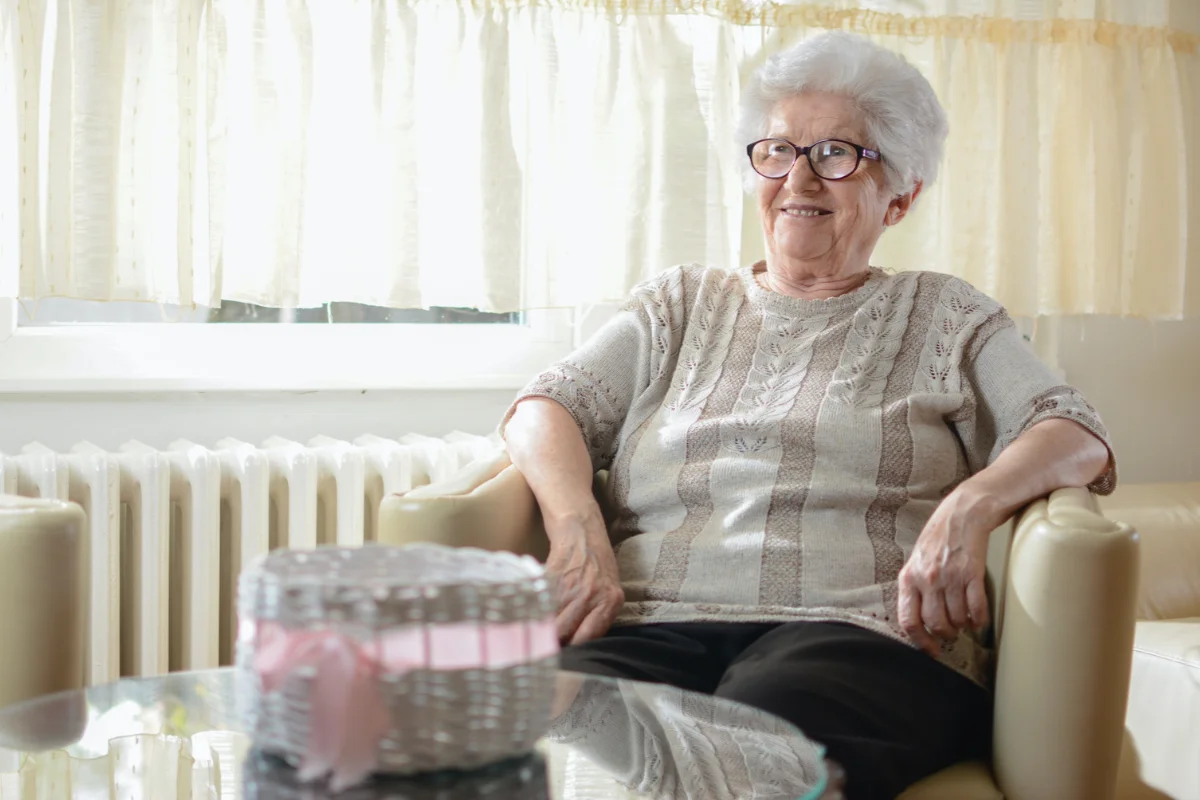All About Memory Treatment Solutions: Why Small Memory Treatment Houses Are a Wonderful Selection
Memory treatment services play a vital duty in sustaining individuals with Alzheimer's and mental deterioration. Tiny memory treatment homes stick out for their customized method and intimate setting. With lower staff-to-resident proportions, these homes promote stronger links and tailored care. Homeowners profit from boosted social interactions and a safe setting. As households discover choices, understanding the unique benefits of little memory care homes comes to be important. What factors should be taken into consideration when selecting the right home?
Recognizing Memory Treatment Solutions
While numerous may recognize with basic elderly care choices, recognizing memory care solutions is crucial for households dealing with the obstacles of cognitive decrease. Memory treatment specifically provides to individuals with conditions such as Alzheimer's illness and various other types of dementia. These services supply a structured environment that concentrates on improving the lifestyle for locals through specialized treatment and support.Memory care facilities are made to guarantee safety and security and safety and security, often featuring safeguarded atmospheres to stop wandering. Educated personnel are readily available around the clock to help with day-to-day activities, medicine monitoring, and individual treatment. Additionally, memory treatment programs often include cognitive stimulation tasks, customized to involve homeowners and promote psychological well-being. Families can gain from recognizing these solutions, as they enable educated choices concerning their liked ones' care, making certain that their specific requirements and choices are addressed in a supportive and compassionate manner.
The Advantages of Small Memory Care Homes
Small memory treatment homes use unique advantages that can significantly enhance the lifestyle for citizens with cognitive impairments. One considerable advantage is the intimate environment, which permits for individualized communications amongst team and locals. This smaller sized setting fosters purposeful relationships, decreasing sensations of seclusion and anxiety often experienced by individuals with memory issues.Additionally, the lower staff-to-resident proportion in little memory care homes allows caretakers to offer even more alert guidance and support. This technique not only improves safety however likewise promotes a complacency for the residents.Moreover, little memory treatment homes can adapt swiftly to the unique requirements and choices of each local, enabling a more homelike atmosphere. Such an environment can urge social interaction and engagement in activities, ultimately enhancing the daily experiences of those coping with cognitive disabilities.
Personalized Treatment Plans for Citizens
Personalized treatment strategies are important in memory care homes, as they satisfy the unique requirements and preferences of each citizen. These strategies begin with detailed evaluations performed by knowledgeable specialists, who review cognitive capabilities, case history, and individual interests. This tailored approach warranties that care is not just effective but also considerate of each person's dignity and autonomy.Moreover, customized treatment strategies are flexible, enabling changes as residents' requirements advance over time. This versatility promotes a sense of safety and knowledge, which is important for people living with memory difficulties. Caregivers are trained to implement these strategies constantly, providing support that straightens with the citizens' regimens and preferences.Ultimately, individualized treatment strategies enhance the quality of life for residents by promoting engagement, wellness, and independence, making them a basic element of memory care services in tiny memory care homes.
Developing a Home-Like Environment
Creating a home-like environment is critical for promoting convenience and experience in memory treatment settings, as it considerably influences homeowners' emotional well-being. Tiny memory care homes usually focus on customized touches, such as cozy color palettes, family photos, and acquainted furniture setups, which assist residents really feel much more secure. Integrating elements reminiscent of a standard home, like relaxing living rooms and communal locations, encourages a sense of belonging.Moreover, utilizing natural light and exterior spaces can improve the ambience, promoting leisure and serenity. Team participants play a substantial role in keeping this environment by involving with locals in a thoughtful manner, treating them like household. Routine tasks, such as cooking or horticulture, can additionally contribute to a home-like feeling, providing opportunities for locals to join meaningful experiences. In general, creating a nurturing environment sustains cognitive feature and psychological stability, making it an important facet of memory treatment solutions.
Enhanced Social Interaction and Community
Enhanced social interaction and area are necessary elements of memory treatment solutions. By fostering customized social engagement and developing a family-like environment, these solutions promote purposeful links amongst homeowners. Team tasks and occasions additionally urge engagement, helping individuals feel much more included and supported.
Customized Social Interaction
While social communication is vital for overall well-being, numerous individuals with memory impairments often struggle to involve meaningfully with others. Personalized social engagement in memory care homes addresses this obstacle by developing customized activities that accommodate residents' unique interests and capabilities. By focusing on private choices, caretakers can promote connections that resonate deeply with everyone. Tasks such as art treatment, songs sessions, and led conversations promote cognitive stimulation and emotional expression. In addition, tiny team setups urge friendship and enable even more intimate interactions, boosting feelings of belonging. This approach not only fights sensations of isolation but likewise encourages citizens to maintain a sense of identification, eventually adding to improved psychological health and top quality of life.
Family-like Environment
In a memory treatment setting, cultivating a family-like environment significantly enhances social communication and builds a sense of neighborhood among residents. Smaller sized memory treatment homes often focus on intimate settings, permitting homeowners to develop closer links with each other and personnel. This nurturing atmosphere promotes trust fund, which is vital for people with memory problems. Locals are most likely to involve in conversations and share experiences, developing a supportive network that minimizes sensations of loneliness. The knowledge of shared areas and routines adds to a sense of belonging, even more urging social communication (personalized memory care). In such setups, emotional bonds flourish, bring about enhanced total well-being and a better of life for homeowners as they navigate their everyday experiences together
Team Activities and Occasions

Safety and Protection Features in Little Homes
Numerous little homes made for memory treatment include official source essential safety and security features to ensure the well-being of homeowners. These homes usually use protected entry and leave points to prevent roaming, a typical issue among people with memory problems. Furthermore, security systems and alarm systems boost tracking, guaranteeing that staff can promptly reply to any unusual activities.Interior layouts are customized for security, with minimized threats such as clutter-free pathways and sharp corners. Handrails and non-slip floor covering are generally mounted to minimize the risk of drops. Team member are learnt emergency situation methods, guaranteeing they are gotten ready for various situations.Moreover, individualized care plans might consist of evaluation of specific safety needs, supplying tailored services for each and every resident. Generally, these security and protection features develop a nurturing environment where homeowners can grow while maintaining their self-respect and self-reliance.
How to Select the Right Memory Care Home
Just how can households assure they select the most appropriate memory care home for their loved ones? The decision calls for cautious consideration of numerous elements. Initially, families must evaluate the facility's team credentials and training, ensuring that caregivers are experienced in managing memory-related conditions. Next off, it's vital to analyze the home's environment, concentrating on security attributes and whether it cultivates a feeling of area and belonging. Seeing the center can give understanding right into day-to-day tasks and the social atmosphere, which are crucial for mental stimulation and psychological wellness. In addition, households ought to ask regarding the treatment plans supplied, guaranteeing they are tailored to private requirements. Taking into consideration the home's place and ease of access for family brows through can add to a smoother shift. By resolving these elements, families can make an enlightened decision that prioritizes their enjoyed one's comfort and lifestyle in a memory treatment setup.
Regularly Asked Concerns
What Certifications Should Staff Members in Memory Care Houses Have?
Team participants in memory care homes ought to possess appropriate accreditations, experience in dementia treatment, solid interaction skills, and concern. Continuous training in behavioral monitoring and healing interventions boosts their capability to support citizens effectively.
How Do Memory Treatment Solutions Differ From Traditional Assisted Living?
Memory care solutions focus specifically on people with memory impairments, giving specific assistance find this and organized environments. On the other hand, conventional assisted living offers general assistance with everyday activities, lacking the customized strategy needed for those with cognitive difficulties.
What Sorts of Activities Are Used in Memory Treatment Residences?
Memory treatment homes typically use a range of activities developed to involve homeowners. Common choices include art therapy, songs sessions, cognitive video games, workouts, gardening, and get-togethers, all targeted at improving health and cognitive function.
Can Residents Bring Their Own Belongings to Memory Treatment Homes?
Locals can typically bring their very own belongings to memory treatment homes, enabling them to individualize their living room - personalized memory care. This technique aids create an acquainted setting, advertising comfort and a sense of identity for the individuals

How Are Relative Entailed in the Care Refine?
Member of Get More Information the family play a vital role in the care procedure, often joining decision-making, attending treatment meetings, and providing psychological assistance. Their involvement promotes a collaborative environment, enhancing the citizen's general wellness and lifestyle. While lots of may be acquainted with basic senior care choices, recognizing memory treatment services is important for households dealing with the difficulties of cognitive decrease. These services provide a structured atmosphere that focuses on enhancing the top quality of life for homeowners through specialized treatment and support.Memory treatment centers are developed to guarantee safety and protection, commonly featuring safeguarded settings to prevent roaming. Customized care plans are vital in memory treatment homes, as they cater to the unique demands and choices of each local. Staff members in memory treatment homes ought to have pertinent accreditations, experience in mental deterioration care, solid communication abilities, and concern. Memory treatment services focus particularly on individuals with memory impairments, supplying specialized support and structured environments.